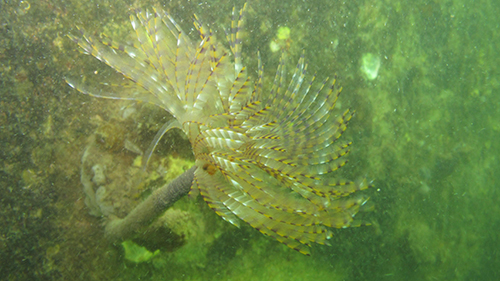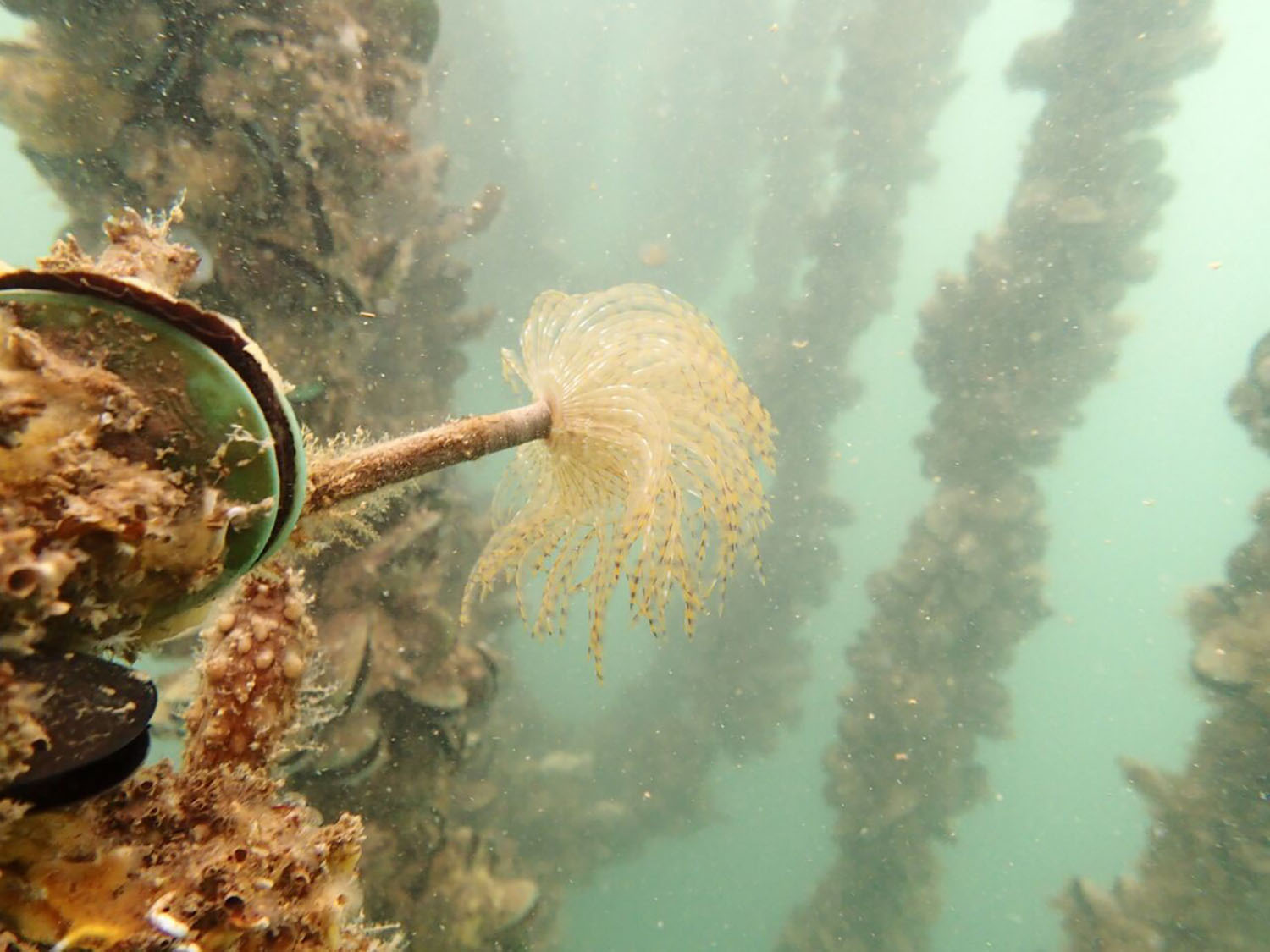Mediterranean fanworm - also known as Sabella - has become well established in many parts of the Waitemata Harbour and inner Hauraki Gulf, including in marinas, as well as parts of Whangarei Harbour.

What does it look like?
Mediterranean fanworm forms dense colonies and has the following identifying features:
- A tube, which is generally fixed to a hard surface but can grow in sediment, usually looks muddy and could be up to 60cm long.
- Long feathery tentacles that look like a single spiral fan and extend out of the top of the tube.
- A white fan banded with pale fawn, orange or brown.
Why is it a pest?
Mediterranean fanworm hitchhiked its way to New Zealand on ships from Australia. Make sure it doesn't catch a ride on your boat to your favourite marine destination. If it does, it could:
- damage your boat by clogging the motor, pipes or propellers
- increase drag and therefore fuel costs
- impact on your catch by smothering native species like scallops, paua and mussels
- affect your enjoyment of activities like diving by changing the underwater character.
Report it
If you see this marine pest, call the MPI Pest and Diseases hotline on 0800 80 99 66. If possible, please take photos and record the name of the vessel and where it was moored, or the location if it was found on the sea floor or structures.
Our biosecurity team is also keen to hear about any unusual marine plants or animals you’ve spotted in Waikato waters, or boats with heavily fouled hulls. Call us on 0800 800 401.
Control methods
How you can help stop its spread
Help us to protect the waters you love by helping to stop the spread of Mediterranean fanworm.
Clean your boat hull twice a year, or before travelling to another region.
| Slip and clean your boat | Apply antifouling paint | Report anything unusual |
| Mediterranean fanworm can grow from fragments so it’s important that anything scraped off is put in a bin and disposed of at a landfill. | Apply a good coat to your boat and don’t miss those underwater fittings. | If you see any unusual marine plants or animals, or boats with heavily fouled hulls, call 0800 80 99 66. |
| Pay special attention to underwater gear and fitting parts that stick out or retain water like the keel, intakes and outlets, propellers and shafts, rudders and casings. |
.jpg) |
 |
If your boat has a live bait tank or a bow thruster you'll need to check these. Take a careful look at the sides of the live bait tank as this is a prime location for very small fanworms.
Make sure you dispose of any fanworms you find onto land - they'll keep growing if put back into the sea.
If you're on the Coromandel
To prevent the spread of Mediterranean fanworm, and other marine pests, Coromandel marinas require skippers of visiting vessels to show that they’ve:
- antifouled their boat hull in the last six months; OR
- lifted and washed it within the last month.
Please keep receipts of haul outs and/or antifouling.
Even if you don't intend to visit a marina, you may get a spot check from a regional council representative while you're at anchor.







To ask for help or report a problem, contact us
Tell us how we can improve the information on this page. (optional)